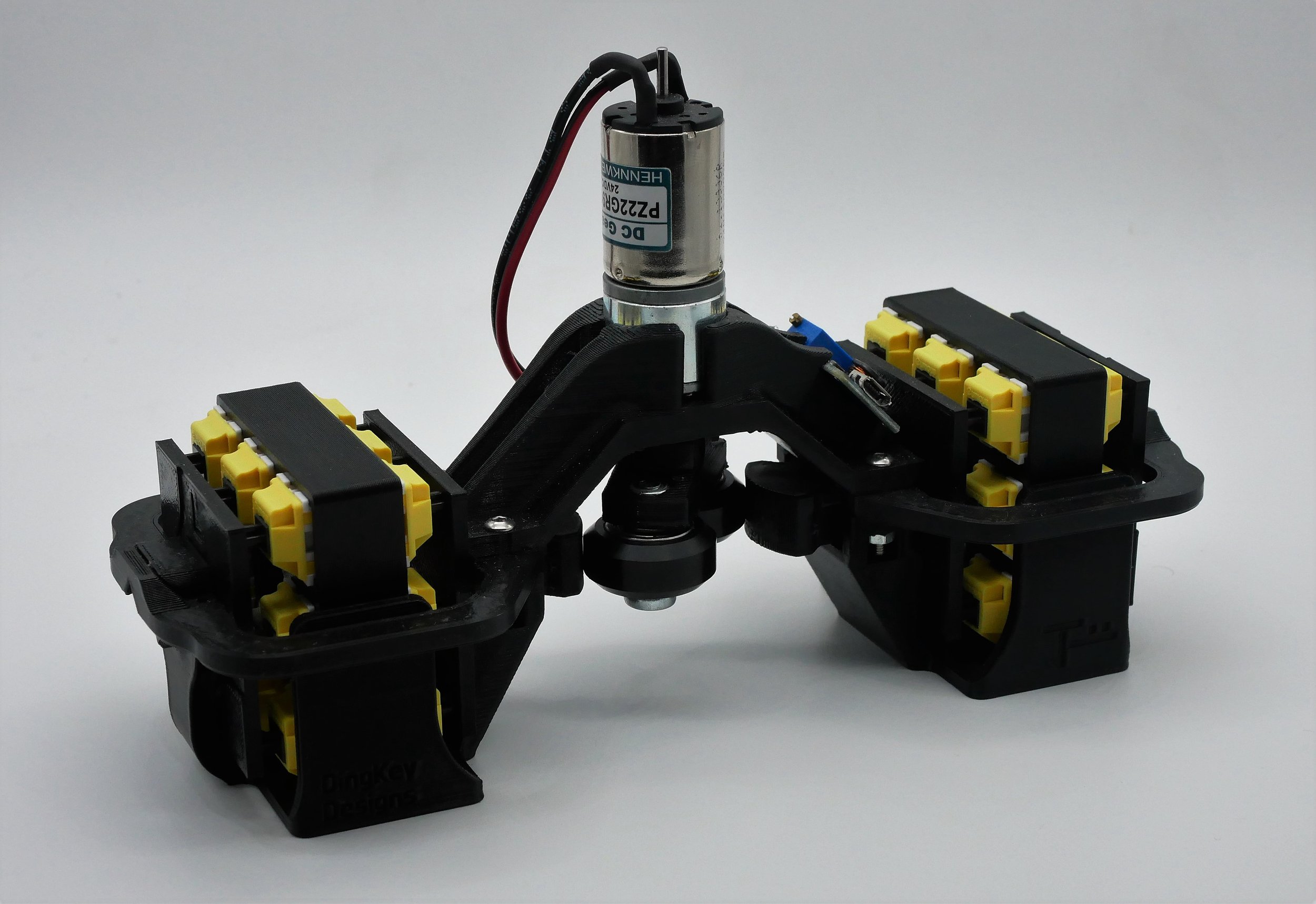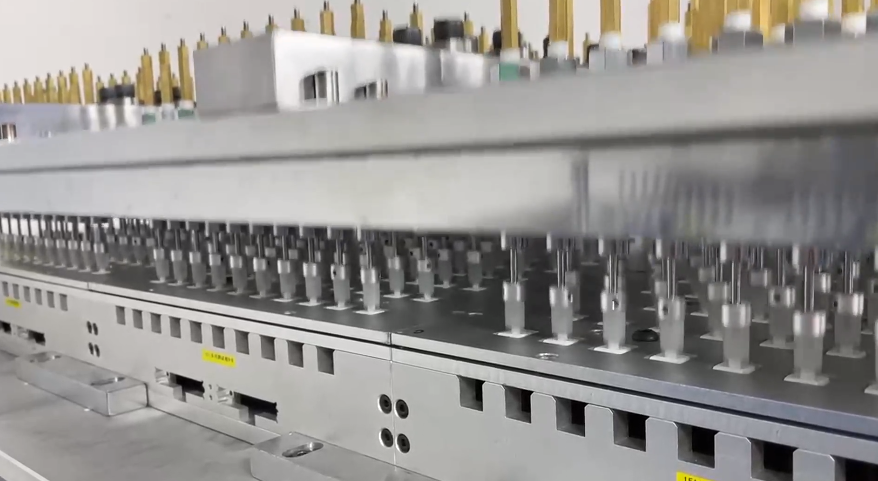Are Break-In Machines Realistic?
As I’m sure the majority of you are already aware, I’ve been using a break-in machine for testing switches in my last handful of reviews. Please don’t get the idea that it’s some ultra-advanced, high-tech instrument to match my force curve meter, either. It’s a fairly simple break-in machine made by dingkeys with slots for 36 switches and no other frills about it. While it has worked wonders for me with respect to writing reviews, coming across the industrial grade break-in machine that Kailh uses for its Novelkeys Dream Cream switches, as well as all the other funky consumer grade modifications that have come about in the past few months, I’ve started to wonder if my meager machine is actually faithful to the real typing experience. Is the machine that I’m using really simulating the true break-in experience that would come about naturally from the abuse I put my writing keyboards through?
Figure 1: There she is - Ol' Reliable.
Interestingly enough, this entire mental dilemma started shortly after writing my review of the Novelkeys Dream Cream switches. As I noted in that review, the Dream Cream switches broken in for 600,000 actuations had virtually no difference in stem wobble as compared to normal Creams, whereas switches that I am testing in my reviews show an appreciable increase in wobble after only 36,000 actuations. At the surface level, something clearly doesn’t add up there. If break-in machines work by slowly wearing down the friction-y bits of the stems and slider rails, it’s not unreasonable to think that as these pieces wear down their tolerances will become looser leading to a great wobble in the stem. So, this would suggest that something about Kailh’s break-in machine causes less friction than my at home machine? The subtle point that explains both points simultaneously lies in the differences in the mechanism between the two.
Figure 2: Kailh switch break-in machine go brrrrrrrrrrrrrr.
Looking at a still image of Kailh’s big behemoth of a device, we can see right away that it looks different than what many people may initially think of as a break-in machine. Rather than bunching all the switches together and then pressing something up against them, the switches are spread out and pressed individually by narrow, pointed arms which move insanely quickly. Watching the machine run in the real-time video, as can be seen in my Novelkeys Dream Cream Switch Review, these arms move almost hypnotically perfectly up and down. This is because they are actuated using solenoids. I’ll spare you all the physics and magnetics explanations by stating that solenoids are a simple device which extends a pole straight out when activated and retracts it when it is turned off. (Think Minecraft pistons for all you Zoomers reading this one.) Thus, since Kailh’s machine operates in a perfectly straight up and down fashion, we can sort of roughly consider them as only wearing down the absolute dead middle of a switch’s stroke.
Figure 3: Underside of my break-in machine showing electric motor-based rotating mechanism.
Moving next to my machine, however, we see something that looks quite different. Switches are loaded up into modules which are pressed all at once by a flat, 3D-printed plate. Rather than being driven by a solenoid, there is a rotating piece connected to an electric motor which rolls across the backside of an arm attached to the plate and forces it forward into the switches. Thinking about how this works in super slow motion since I’m too lazy to figure out how to make a convincing video for such, you can imagine that as the rotating piece first contacts the plate, it does so only on one side, causing pressure to slowly be focused on one edge, followed by the center, and then the opposite edge as it fully rotates through. By extension, the switches inside of the machine are having force applied to them not dead down the middle, but rather in all the directions they can physically move. Thus, break-in machines which rely on electric motors in this fashion don’t press switches in perfectly up and down, but rather ever so slightly unevenly. This uneven pressing is what leads to greater interaction across all nooks and crannies of the stem and slider rails and causes a greater wear down leading to more wobbly switches.
Figure 4: Basically this entire short article.
Okay, that’s cool Goat, but what’s the point in this “big revelation” that you’re claiming here? See, when we type on our keyboards day to day, none of us actually consistently perfectly hit the center of our keycaps each and every time. In fact, it’s very likely that we press ever so slightly off center, if not altogether noticeably so as we clip edges of keycaps trying to beat our MonkeyType records by shoving in every keystroke we can. And so, as we struggle to match that one lucky MonkeyType record we had months ago, we actually break in our switches in an uneven fashion more like the electric-driven motor break-in machines and less like the solenoid ones. Therefore, break-in machines which actuate switches in a very subtly uneven way more faithfully recreate the break in of switches that occurs with typing than perfectly straight, often super high-speed ones.
When I had initially set out with that nagging thought in the back of my head, I don’t think I could have possibly imagined that the differences were driven by something so subtle. Even at thousands upon thousands of actuations per hour, something as seemingly innocuous as whether a break-in machine is driven by solenoid/piston-like mechanism or a rotating/electric motor type one makes all that difference. While I can sit back with ease of mind knowing that the way I am breaking in switches is about as realistic as I can possibly achieve without writing even more reviews than I already do, I don’t really think that this type of break-in machine is the better than solenoid driven ones. In fact, without a head-to-head comparison I can’t make any sort of definitive claim about which one is “better”, and like all things in switches the likely answer is that it is entirely preference driven. I just thought this was too neat of a subtle point to pass up talking about since it is yet another piece of switch minutiae that can drastically change your keyboards’ overall feeling.



